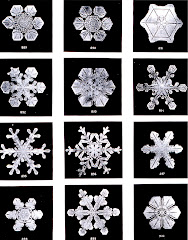Ray Gonzalez
FRANK O’HARA
When Frank O’Hara was hit by the dune buggy, the music fanned out across the beach, one or two friends with him waiting for the ambulance in horror, not because the young poet was dying, but because of what they heard above the sands. When Frank O’Hara saw Billie Holiday and wrote about her, the tragic tune wrapped itself around wrinkled foreheads of the few who understood when he said, “The only way to be quiet is to be quick.”
Billie’s piano player disappeared in a blue cloud and her junkie dealer was left bleeding in the alley behind the stage, though they never read Frank O’Hara, but paid the price for happiness under the neon dance without knowing his New York
When Frank O’Hara was hit by that vehicle, his feet were bare and his face was shaven, like he wrote in lines about nocturnal architects loving each other, his body leaving imprints in the dunes, the patterns weaving toward Chez Jane, who answered Frank by bringing the ghost couples he wrote about down to earth, their entangled choirs singing for him as he lay face up in the sand, his terrestrial cuckoo keeping time overhead.
INFINITE FACE
For David Foster Wallace
You can place the light upon the words and show your face and describe how the depression of the age is meant for heroes and not for villains. You can tell the wild story and invent situations where the computer is a giant turnip growing in the brain, smelling of electrified fear and the sound of a young man hiding in the caverns, composing novels that bring darkness and a white egg that contains the secret to the sane existence that is sought when young men dig and remain hidden.
You can place the light upon the thread of humming formulas that drive the lobster to crawl out of the sand and embed itself in the sandal of a sleeping sunbather who thought he saw the planets spinning on a website and it was all he needed for his future world to destroy itself, punishing its robots by making them human, torturing its writers by watching them dance inside page 1,412 of the novel where the paragraph about saving oneself was interpreted in exactly the right way.
You can place the light upon the sentences that extend to the moment of birth, the string of the bloody umbilical cord tied to a story about the agony of the age, the idea of being, even the flowers cut when the ceremony took place and the silence of the hungry crowd was a footnote at the bottom of the page leading to existence in a place we haven’t read about.
THREE UNFINISHED MASTERPIECES
Marcel DuChamp
The brain is embedded in stone and the chain resembles a baby being born, but his hands have sculpted before, so the incomplete birth brings a cloud onto the worktable and several hammers fall to the floor, the form of guessing hardened into an entrance toward oblivion where the outstretched shoulder blades are actually a man running away from his bird because his lover did not chisel the stone, but collected the shards instead.
Max Ernst
It can only be described by its title—“The Susceptible Virgin Opening Her Dress to White Whales While the Investigation of the Balloon Brings Madness to the Forefront of the Ear Where the Priest Embeds Arrows Into His Waiting Savior.” This forgotten work Ernst abandoned when the war came used to be called “Eight Rubber Bands Stretched in the Queen’s Butter Before Her Black Stocking Was Removed by the Winter Wind.” After Ernst changed the title, he fled.
Paul Klee
The orange flowers on the wall allow the piercing study of a hand puppet Klee did not finish because he couldn’t find the puppet’s head. It resided in his studio, but the cloth head disappeared one night after the last thunderstorm that enveloped Klee’s village. He had spent six days making the tiny head out of pieces of cloth, string, and unknown objects. When the head disappeared and the remaining sheath of the body fit on Klee’s right hand, it did not look like a headless puppet. When Klee held his hand up in the air, it resembled a glove Klee used to wipe the tears off the face of the one he loved.
AT THE TIME OF THE ARMISTICE
The sleeping children woke up and their sad mothers came alive and quit weeping for what was lost. Men whispered among themselves as if something was not properly decided, even if their side created the earthquake and the other side brought the hurricane that caused the bridge from one sea to another to be destroyed by strange, winged creatures who invented the first typewriter. If this is true, the treaty was improperly signed, though the circus tent was left open for 24 hours, the horizon filled with restless coffins of 23 year olds who came back with numerical legends tattooed on their shattered foreheads. Such details do not account for the language in the document and the vow from the winged, ugly beasts that they would patrol the earth to make sure no one invested in the theory of evil again. The sleeping children woke to the sound of bristling wings and couldn’t believe the day’s lesson in school involved taking crayons out of their boxes to color funny, round faces of people they didn’t know. When the giggling and wonder died down, the children held their colored pages in the air and their sad mothers kept coming alive.
THE DAYDREAMING VIRUS
Electromagnetic radiation is not only everywhere, it is forever. It never disappears. Long after the sun is gone, man-made electromagnetic waves will hurtle through the universe at the speed of light. It is why Orson Welle’s 1938 War of the Worlds radio broadcast is streaming over the star Epsilon Cygni, seventy-two light years away. It is why the eye waits for the virus to daydream before looking in the bathroom mirror to see how the eye turns redder each morning. This gaze is not a secret, but one reason war trauma among adults and a lack of family mealtimes among children promote asthma and give the daydreaming virus a home. The first girlfriend the man had in high school, forty years ago, recently willed her estate to a right-wing, separatist group. The man doesn’t know this about someone he hasn’t seen in decades, though he still dreams about how she looked at age sixteen. When the child cries at night, the shadow vanishes and the next morning, a news channel claims two bottled ghosts, of an old man and a young girl, were sold at auction in New Zealand
_____
Ray Gonzalez is the author of eleven books of poetry, including the collection of prose poems, Cool Auditor (BOA Editions). He teaches in the MFA Program at the University of Minnesota in Minneapolis
_____
RECONFIGURATIONS: A Journal for Poetics & Poetry / Literature & Culture, http://reconfigurations.blogspot.com/, ISSN: 1938-3592, Volume 4 (2010): Emergence











No comments:
Post a Comment